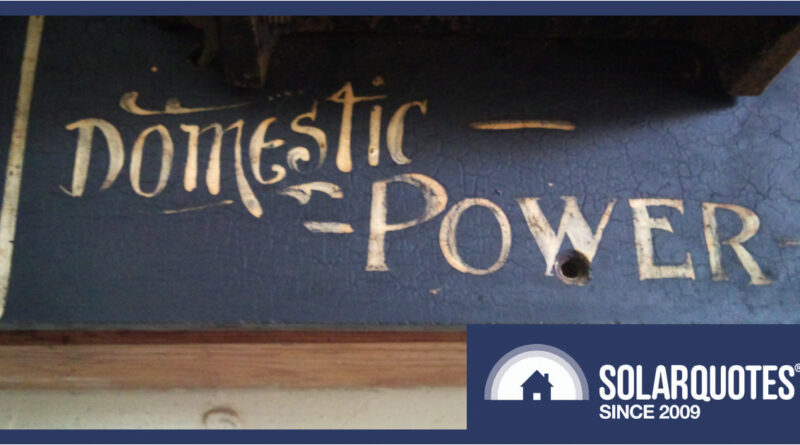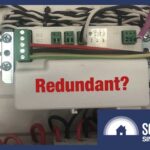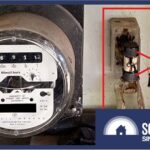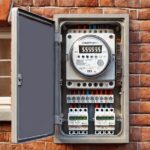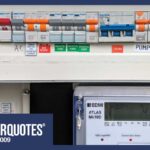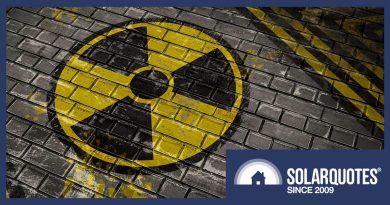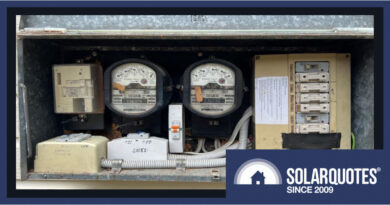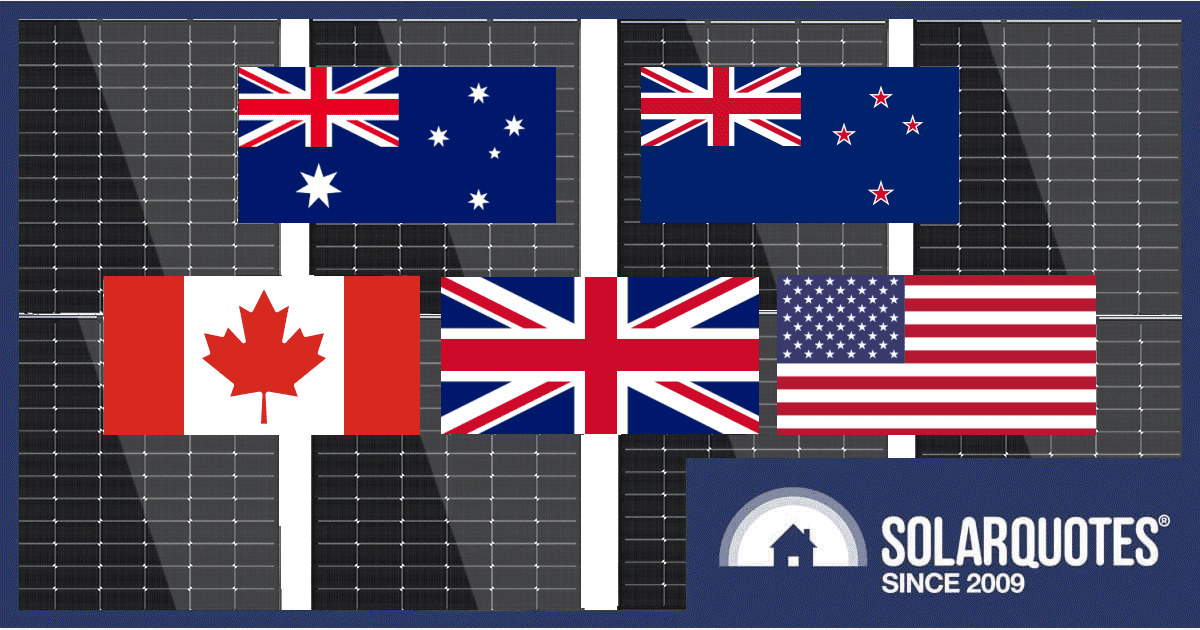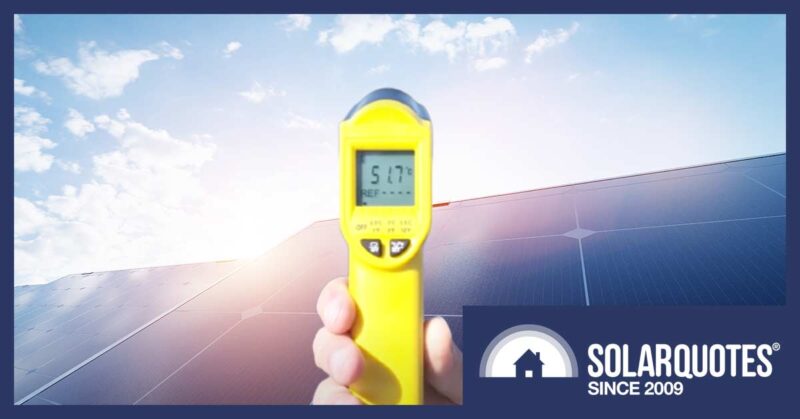When Switchboard Upgrades Are Crucial To Getting Solar (A Pictorial Guide)
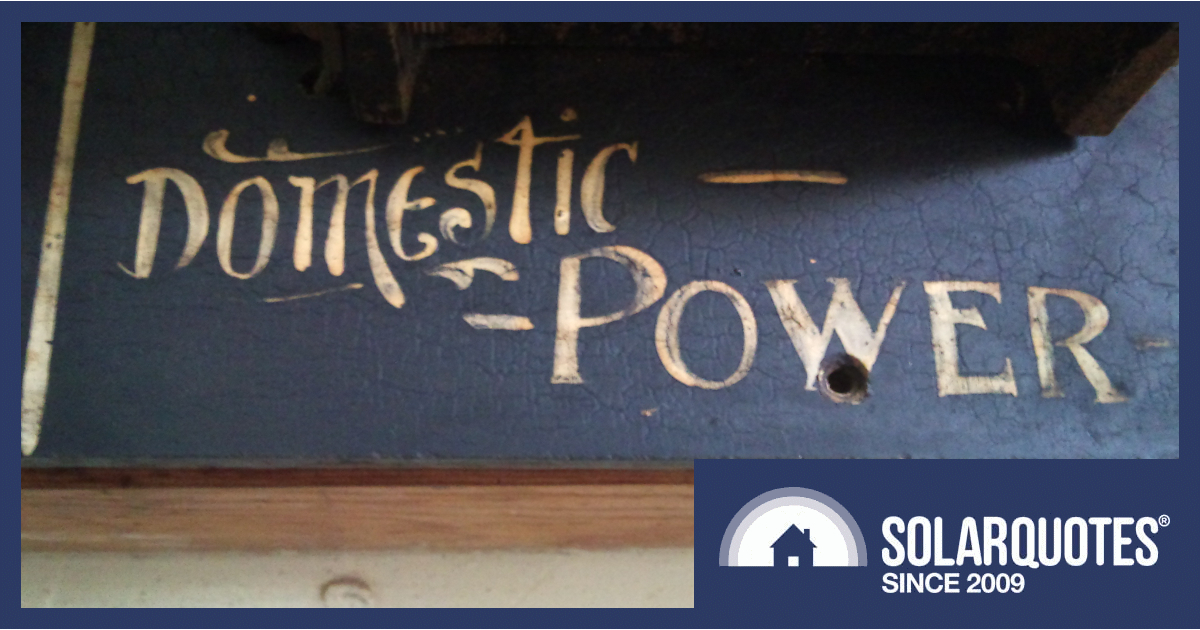
My eternal shame is that I couldn’t save this piece of hand-painted switchboard craftsmanship from a demolition crew.
At SolarQuotes, we’re often asked about peripherals that aren’t as cool as the glass on your roof or the monitoring app you can show off at someone else’s barbecue.
When you get a quote for a solar power system, you may also get a quote to update your switchboard, upgrade the retail electricity meter, and even upgrade the grid supply cable to the street. This can be a bit of a rude awakening. Even more shocking is these items aren’t something a shady contractor is trying to sell you, they’re a legal requirement.
If you’re just starting on your solar energy journey and you haven’t got the foggiest about the power to your house, we have a couple of handy guides to help identify your supply and also explain some of the jargon you’ll encounter when talking to installers.
Scroll through the hall of fame below to see a few exciting examples of what installers encounter daily, why some of them are problematic. Maybe you’ll pick up a few ideas on what to expect or what questions you should ask.
Should You Pay For Your New Grid Meter?
Retailers will often charge for meter changeovers – a nominal fee to make you pay for the remote meter reading the retailers find so convenient. Savvy customers will demand they do it for free or shop around for another retailer who will offer a free meter upgrade as a sweetener for you to change supplier.
The Electrician Is Left To Tidy Up The Paperwork
For years I have been resigned to the fact that the poles and wires people (Distributed Network Service Providers – DNSPs) have been using the solar industry as a broom to sweep up messes and sort out their incomplete records for free. In order to get a connection approval and the meter changed over, we have to update names, (we need a first name not an initial), mailing addresses (C/O Post Office won’t do), physical addresses (provide rates notices) and deal with foreign call centres… (Mt Barker? no it’s Mount Barker!!) because they’ll reject it if the spelling isn’t just right.
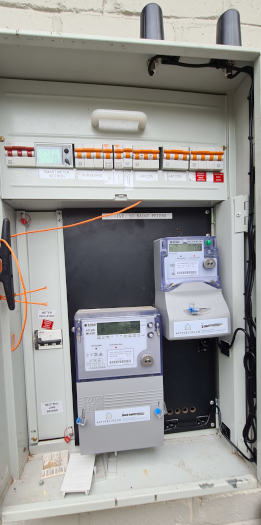
Modern meter board with labels for address and NMI and, most importantly, an orange drawstring for the next electrician. Main switch in red, consumption meter and various sub circuits on the main rail. The entire left hand side of the meter panel is taken up by the integrated meter isolator. Meters themselves have external aerials on top. Credit: Solar Depot
It’s as if the electricity bills haven’t been getting through for 50 years beforehand? Still, I know first-hand that Mt Barker has two properties identified as “lot 8” and another two as “lot 10” and all four of them are on the western side of the same stretch of Bald Hills Road. I suppose you need the brilliance of an electrician to sort it out. I digress…
Never Change Electricity Retailer Before Your Solar Is Installed
Whatever you do, don’t get a solar connection approval and then change electricity retailer before the installation is finished or the meter is changed. You will suffer the scorn of installers, the dismay of DNSPs and raise the ire of retailers alike.
Your 1990’s House Probably Needs Upgrading
The general rule of thumb is buildings often need an overhaul at 30 year intervals. Whether it’s because of a change of use or a change of occupants, we find tastes and expectations change, both in terms of living standards and moreover technical standards – like the wiring rules known as AS/NZS3000.
For example, the series of Australian standards on solar installations didn’t exist 30 years ago, and AS/NZS4777 (inverters) has already been updated in 2015 and again in 2020.
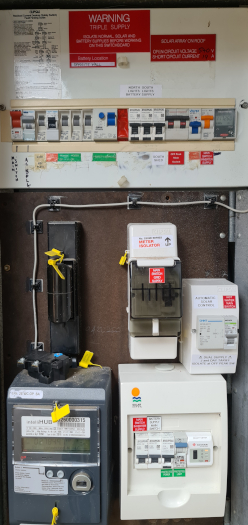
A legacy board with full rail, 19 poles, of sub circuits, plus extra enclosures for two solar consumption meters and a hot water controller. Little else will fit in here because the items with yellow seals can’t be moved easily. Credit: Solar Depot
Now, these changes in statutory rules aren’t retroactive. If your house was wired to the rules 30 years ago, then it remains as legal as it was when the first certificate of compliance was written. However, if you change something, and it’s not a simple repair or like for like replacement, then the new work must be done to meet current standards. For example: Any new final subcircuit shall be protected with an earth leakage device (RCD/safety switch) and any house put out to rent shall have mains-powered interconnected smoke alarms – and on it goes…
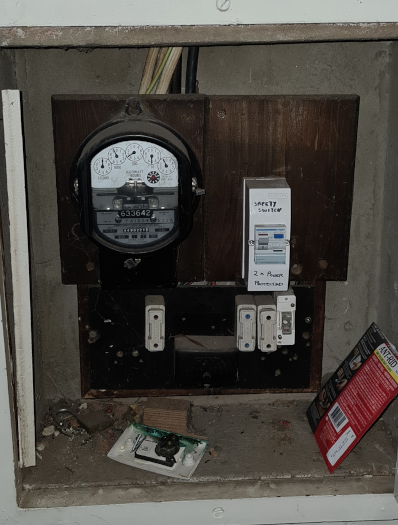
The most absolutely basic semi-detached public housing switchboard. There’s just one main switch. One light circuit. Two power circuits, (and gas appliances). Compliant in 1960? The black fuse panel is asbestos. The “safety switch” protection is a retrofit to make it legal as a rental. Image credit: my former slumlord.
My own place, built around 1950 had hard black rubber wiring which crumbled to dust when disturbed. There were no power points in the bedrooms at all. The ceramic fuses offered live parts you could stick your fingers into. Most disturbingly, they didn’t even have an earth wire connected to many power points – that’s just how it was.
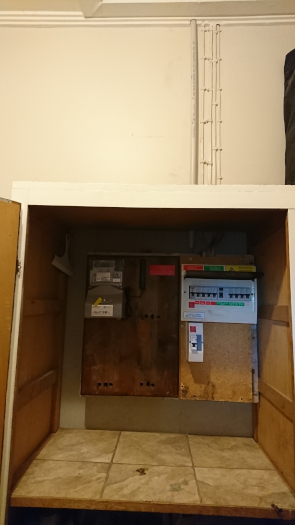
This post-WW2 house with meter-in-the-laundry got lucky. For some reason before solar installation (probably for remote reading), the retailer got a smart meter fitted on the existing wooden panel, which saved the massive expense of moving the meter position to the external wall of the house.
As a result, I have seen reports where a punter has run a cord out of the (un-earthed) lounge room and plugged in a vacuum cleaner to give his car a tidy up. He wasn’t aware the vacuum cleaner was faulty; the external casing was live. It would have blown a fuse if he’d plugged it into the laundry or kitchen, but when he went out onto the wet grass he was electrocuted. We’ve come a long way from the time when only wet areas of the house were deemed dangerous enough to need an earth wire.
Switchboard Upgrades A Great Opportunity For Better Solar Monitoring & Control
In many instances installing solar panels means you’re doing more than just adding a single circuit breaker. And in fact, to get the best out of your new system, you will need to fit a consumption meter (or two) and a contactor to automate your hot water service. It makes good sense to overhaul the switchboard in the same instant. Many installations simply don’t have enough space to install the gear required without removing old mechanical meters and condensing old 2 or 4-pole safety switches into single-pole units that offer greater redundancy in any case.
If you have a spare 9 minutes then Tradie Trev can run you through the process of upgrading a switchboard in a brick veneer Queensland house where the chipboard meter panel had to be removed for a solar metering install.
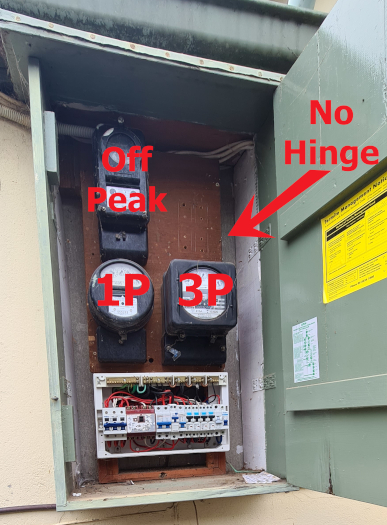
This customer was sold a cheap upgrade. The asbestos and fuses were removed, and some old switchgear was reused. However, the DNSP would not install the smart meter because the panel wasn’t hinged.
The other requirement when installing solar is that of the DNSP authorities. The poles and wires people used to own the metering equipment, and even though it’s now the electricity retailer’s responsibility, many meters have to be updated for solar power systems (i.e., smart meters installed). And nobody will work on legacy switchboards if they have asbestos in the boards themselves or the linings of the enclosures.
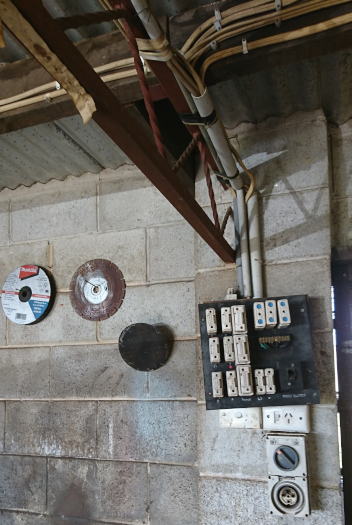
For a 1960s(?) shed install, this was neat enough despite the burnt 3 phase outlet.
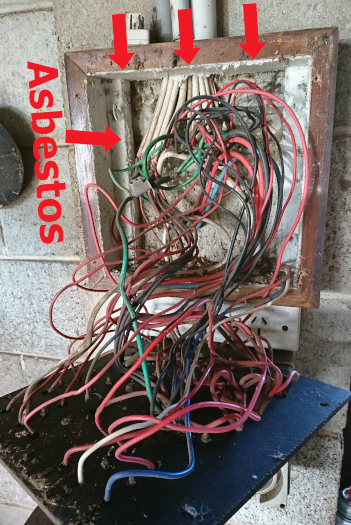
However messy the wiring looks isn’t a concern. What matters here is not only is the black fuse panel asbestos, but also the white lining of the box.
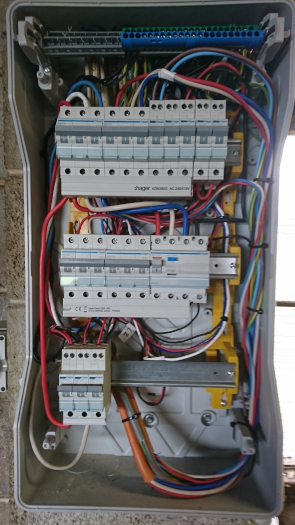
That mess is something we can follow now it’s straightened out. Having extra room in the enclosure is a real boon.
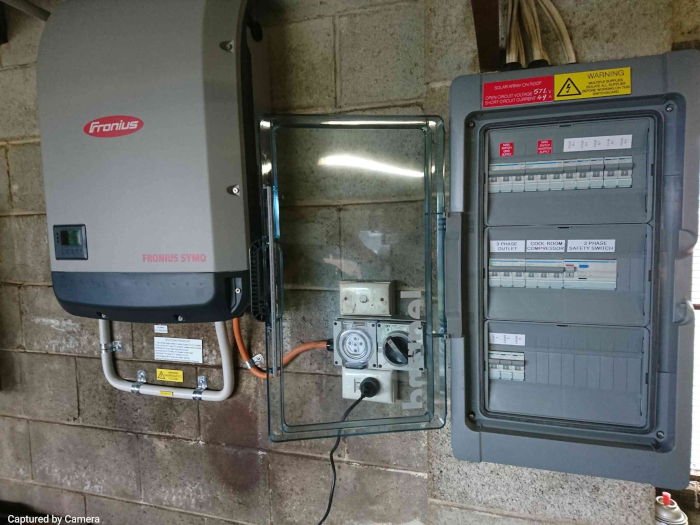
Finished product with appropriate labels for compliance in this century.
Switchboard Horrors
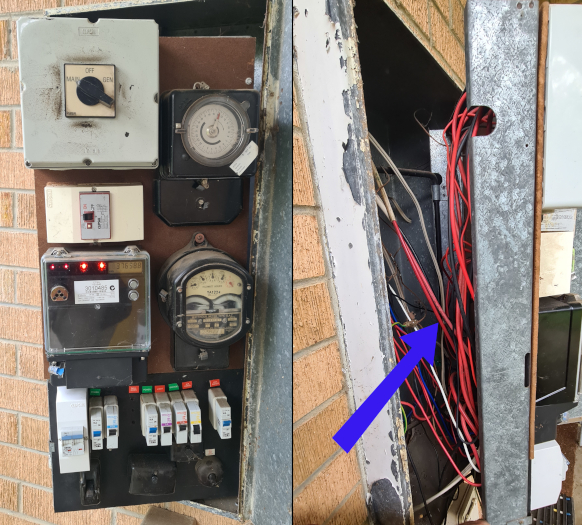
At first glance, there was no space, so this was a bit of a disaster, even before we tried to open the board and found the incoming main service cables (blue arrow) were so taut you couldn’t actually access anything.
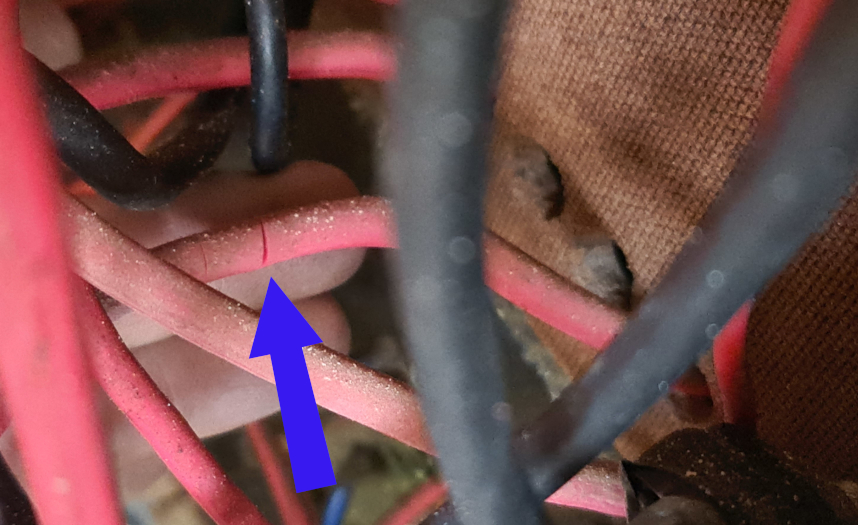
The most dangerous part of this job is where some idiot stuck his fingers to get some contrast in the photo. This is the 16mm² incoming consumer main for the property and the insulation is cracked and terribly brittle. Thankfully for all concerned, we had a cooperative meter technician and some heat shrink sleeve to effect a repair without needing to tear the roof off the building and be without power for days.
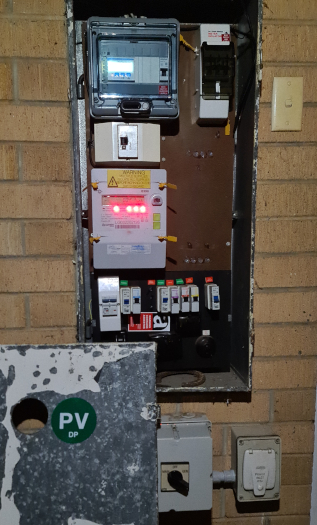
With the generator inlet switch moved, a new meter isolator at the top right hand corner and enclosure for solar circuit and consumption meter on the left, we finally finished this job with room to spare at 8pm. Full credit to the dedicated staff at Solar Depot.
The other DNSP conniption I have seen recently actually prevented solar installation. If solar went ahead, a meter change was required, but the house in question needed a switchboard upgrade, and that meant the overhead service attachment point had to be changed. This brought into question the overall height of the cable swinging over the road. Because the rules have changed, and everything had to be updated, including spending $15,000 to dig under the road and garden, the solar power project was abandoned and everything remained as compliant as it was when it was originally installed.
Bearing this job in mind, I find it a bit offensive the DNSP has the temerity to demand these changes sometimes. According to the national electricity rules, the service fuse is the demarcation point. Say it’s on the fascia of the house. The equipment downstream of the fuse, the consumer main to the retail meter, is the customer’s property. Fair enough. The equipment upstream of the fuse belongs to the DNSP. So the wire that swings from the pole down to the fascia is a supply authority asset, and they’ll trim trees to protect it.
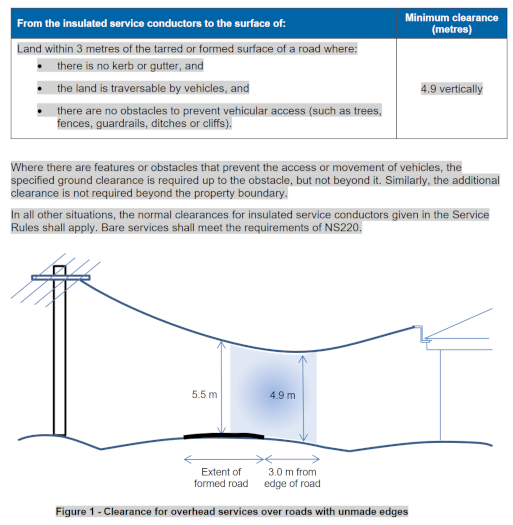
I’ve had dealings with DNSP officers that change as much as the wind does. Some do a digital drive-by via street view, others turn up with a ruler and a rule book, so your mileage may vary in how they interpret the guidance. Image credit: Ausgrid
When the DNSP changes the rules about how high off the ground that cable can be, I would argue it’s their responsibility to make good. As it stands, there’s at least one pensioner I know of who can just afford a solar power system, but can’t afford the demands of Ausgrid to get it installed.
(The cable between the fuse and the retail meter belongs to the customer as well but my mate Albert from the AER never managed to clarify who’s responsible for that wire if I wanted to put another meter into it.)
Check Your Switchboard Before Your House Burns Down (Seriously)
I have seen first-hand the results of a very simple poor connection on an old ceramic fuse holder at my Mum’s house. It was nearly a whole switchboard fire. It may sound far-fetched but every time you switch on a kettle you’ll build some warmth in the wiring, causing cables and connections to expand and contract slightly.
Over years, these cycles and ambient temperature cause cables to creep and screw connections to loosen. Many electricians will actually run over all the screws in a switchboard when they have the escutcheon off, just to make sure everything is tight. It can show up potential problems before they become actual failures, as well as prevent callbacks for unrelated faults.
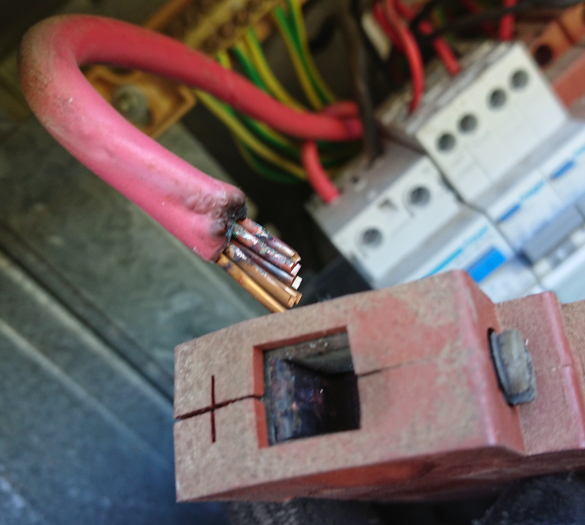
Even a 1990s build might have issues. This is the 16mm² main feed from the street and the switch has a loose, dirty, burnt connection, which has begun to melt the cable.
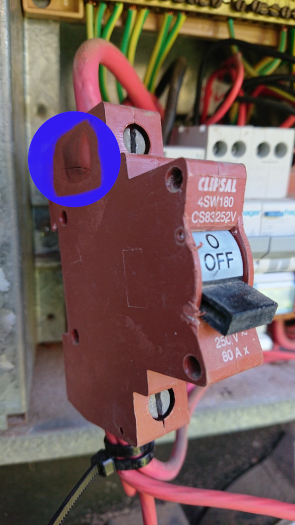
This same switch has developed a blister (circled in blue) where it’s been melted by the poor connection. It looked fine from the front and would have been missed without the casual terminal check your sparky should do.
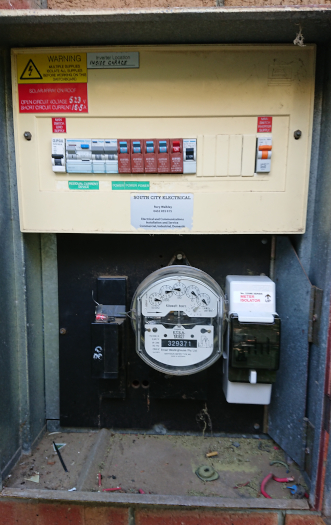
With a new main switch, this same 1990s board is ready for a smart meter. At the bottom left, we can see the service fuse, the existing meter and the new meter isolator on the right.
Problems are exacerbated by old wiring. Not just old rubber insulated or ancient timber conduit systems, but white PVC wiring that “bleeds” green muck as the plasticiser migrates out of the insulation, leaving it hard and brittle. Even modern houses with polystyrene insulation have similar issues if the wrong PVC cable is installed.
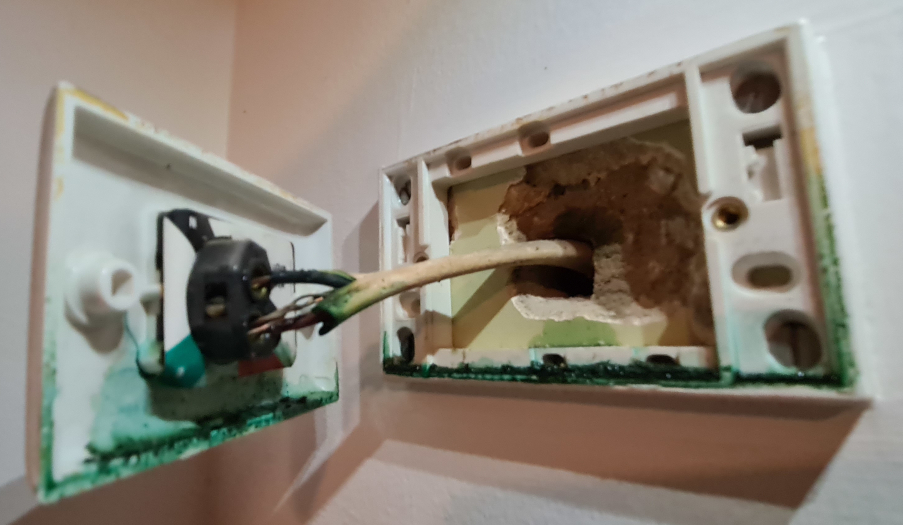
Green oily-looking gunk coming from your power points indicates the wiring is becoming old and brittle. I like the original wall colour, though.
Some wiring and sockets may never be a problem, but then again, when I’ve plugged in the slow charger for my little EV, I’ve seen first-hand the heat created by 8 amps current for 5 straight hours. As a result, I have so far replaced 2 wall plates and 3 cord plugs/sockets, all a bit old and dirty, all melted after being 80% loaded for a few hours.
So again, as things change (this generation of EVs are at most ten years old), many will require dedicated charging circuits from your main switchboard, and of course, that means there has to be space available in that switchboard.
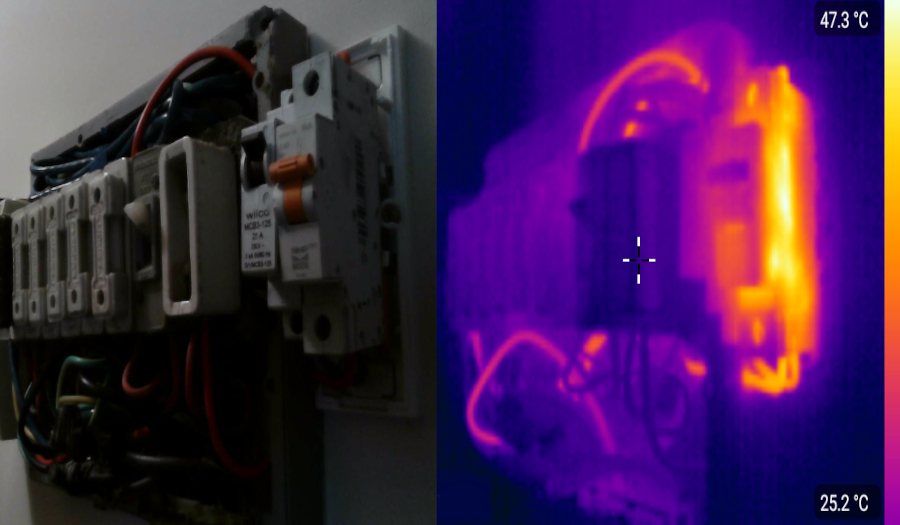
This delightful late 1960s sub-board had a ducted air con tacked on the end and 8.2kW of solar power cracking through it. 35amps for hours on end makes things a bit warm. The same thing will happen when an EV charger is installed.
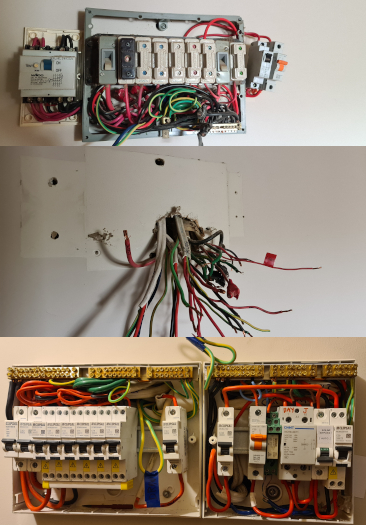
Label everything before you remove the outdated hardware. Reassemble into seven safety switches instead of just one. Add a “sunshine circuit” in the housing on the left, to turn the hot water on when the solar system is exporting. And make sure there’s a draw wire for the next sparky to pull a cable down the wall.
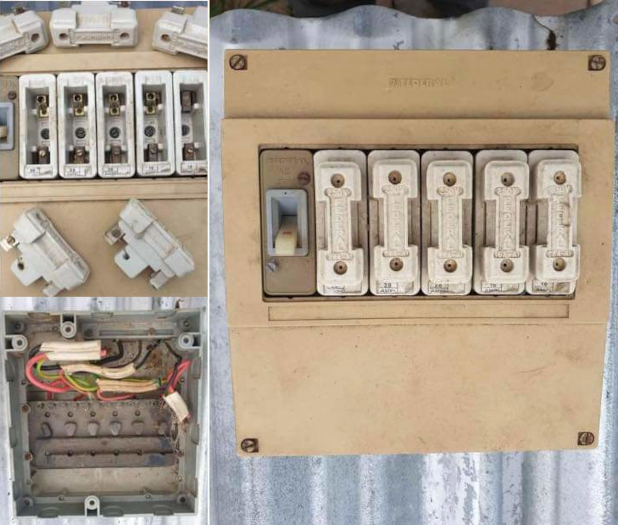
This has got NOPE written all over it, if your electrician says yes I’d ask why.
If you’d like to see exactly why these things are a liability, spend 10 minutes with Tradie Trev as he swears his way through some bad practice, burnt connection, asbestos drilling, plier preference, meter upgrade shenanigans in sunny Queensland.
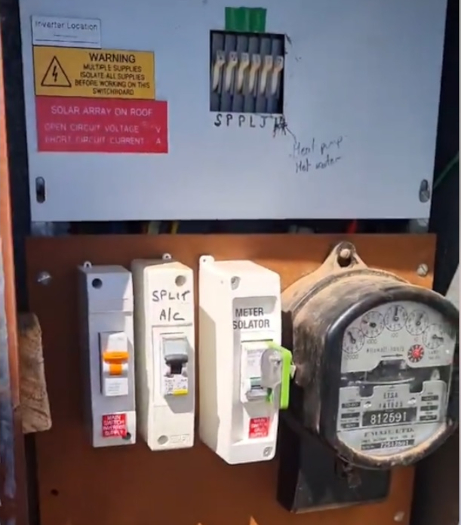
The narrow “Klixon” circuit breakers at the top are a liability, but the switchboard is held shut with a lump of wood so obviously the precedent for workmanship and the budget isn’t high. Hence this installer has chosen to add a single circuit for the basic solar power system.
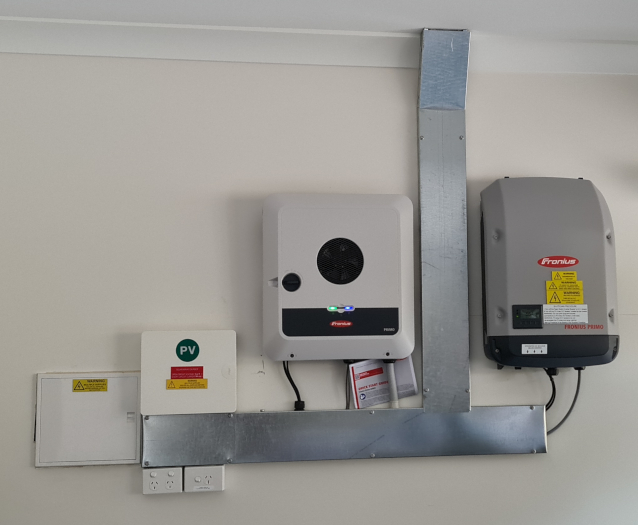
Sometimes you just have to install an extra enclosure next to the main board. Credit: Solar Depot
When A Switchboard Upgrade Is Definitely Needed
If you have all, or indeed any of the ingredients here:
- black asbestos fuse panel
- timber meter panel
- chipboard
- ceramic fuses
- metal conduit
- flat timber conduit
- hard black cables (toughened rubber)
- or the ever-dangerous vulcanised Indian rubber cables (the ones with woven cotton sheath)
Be aware you will likely need more than just a quick once-over. Some of them are fine for now, but just opening these boards up might mean your electrician is obliged by law to disconnect, isolate it and notify the authorities.
In the example pictured below, having disturbed it, I had to hold this panel in place to prevent it literally throwing sparks like a welder. Luckily I was on-site with a fellow electrician who could not only hear the expletives but run up a ladder and pull the service fuses to isolate it.
And that was it. The power was off for a week because the DNSP would refuse to re-energise this place until we had rewired it.
The good part is that nobody died, and the house didn’t burn down, but it was on the cards.
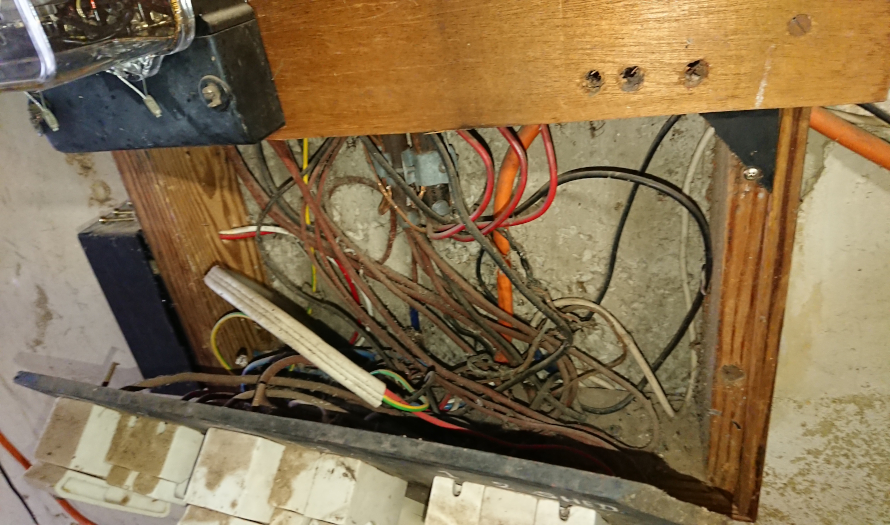
Being aware of the risk, you handle these with a great deal of caution. This one tried to kill me.
Budget For Improvements, Not Just Solar And Batteries
In essence, you can add solar power system support to any old rubbish switchboard – I’ve often had to do it myself. But increasingly, we are seeing that either because of asbestos prohibitions or simply the extra demands placed on electrical systems by modern living standards, switchboard upgrades are often par for the course now.
Whether you’re getting a green loan or using your own means, it’s worthwhile having a proper site inspection and having a plan and a budget for getting everything up to speed.
Original Source: https://www.solarquotes.com.au/blog/solar-switchboard-upgrade-guide/

